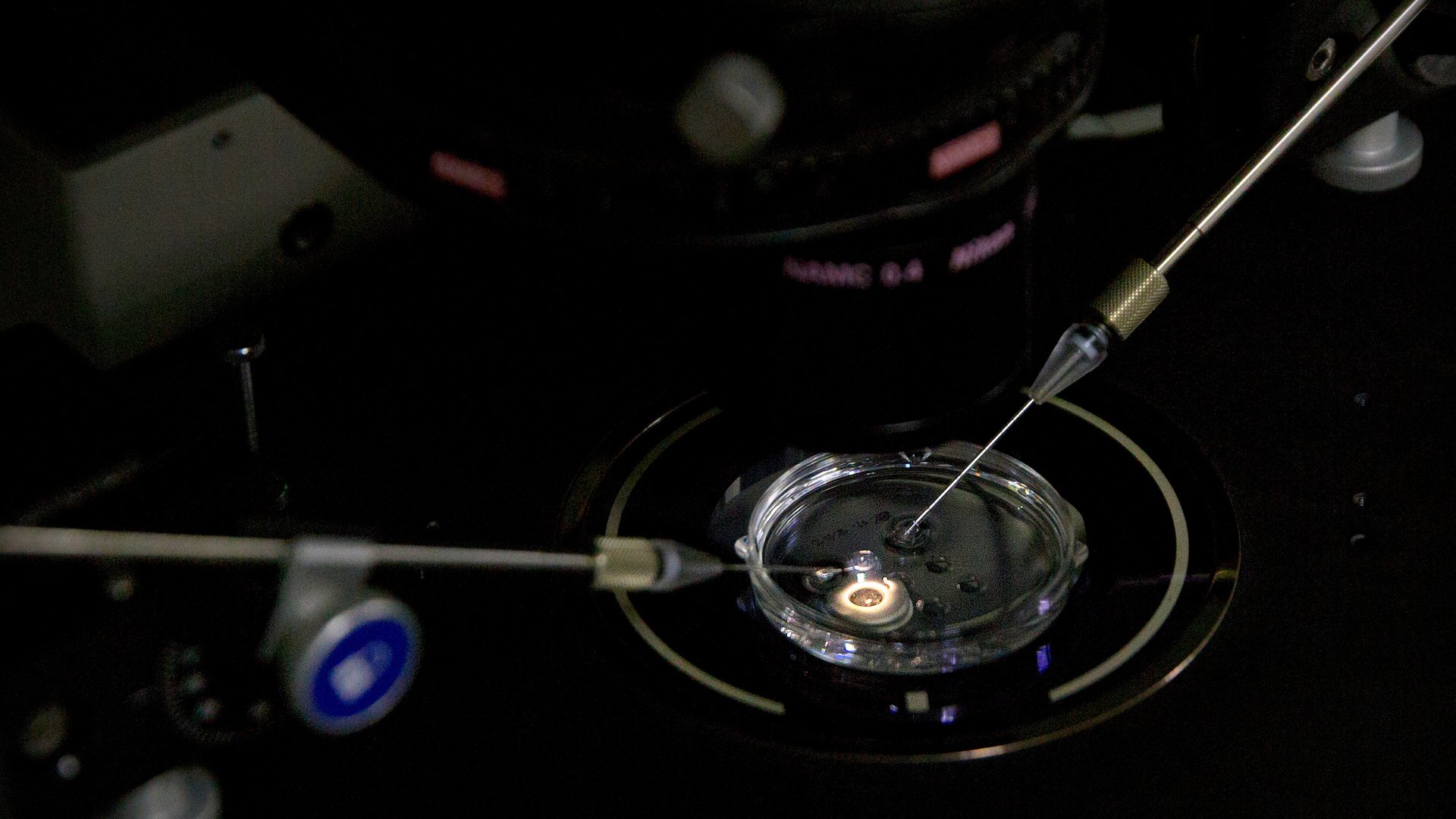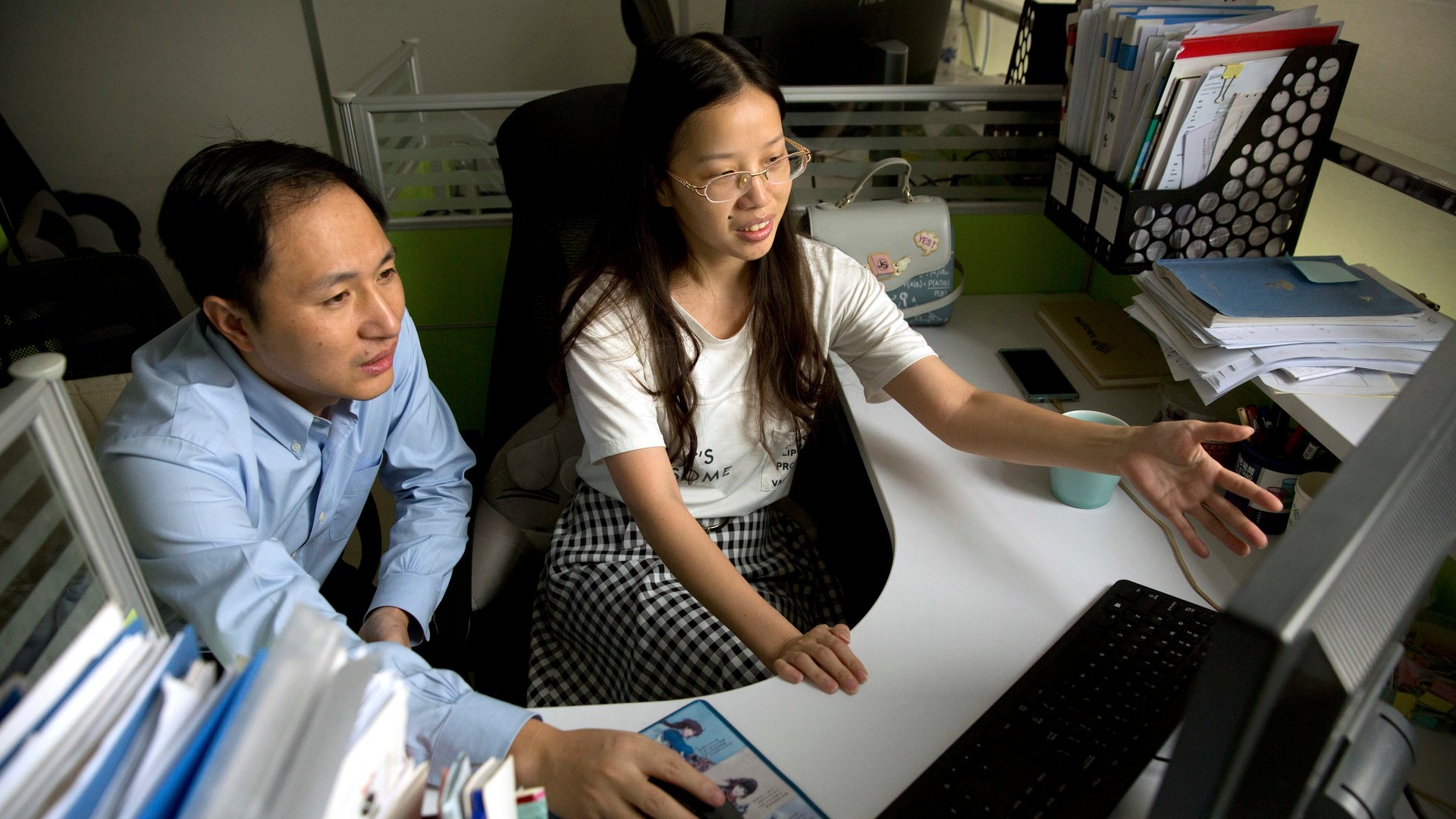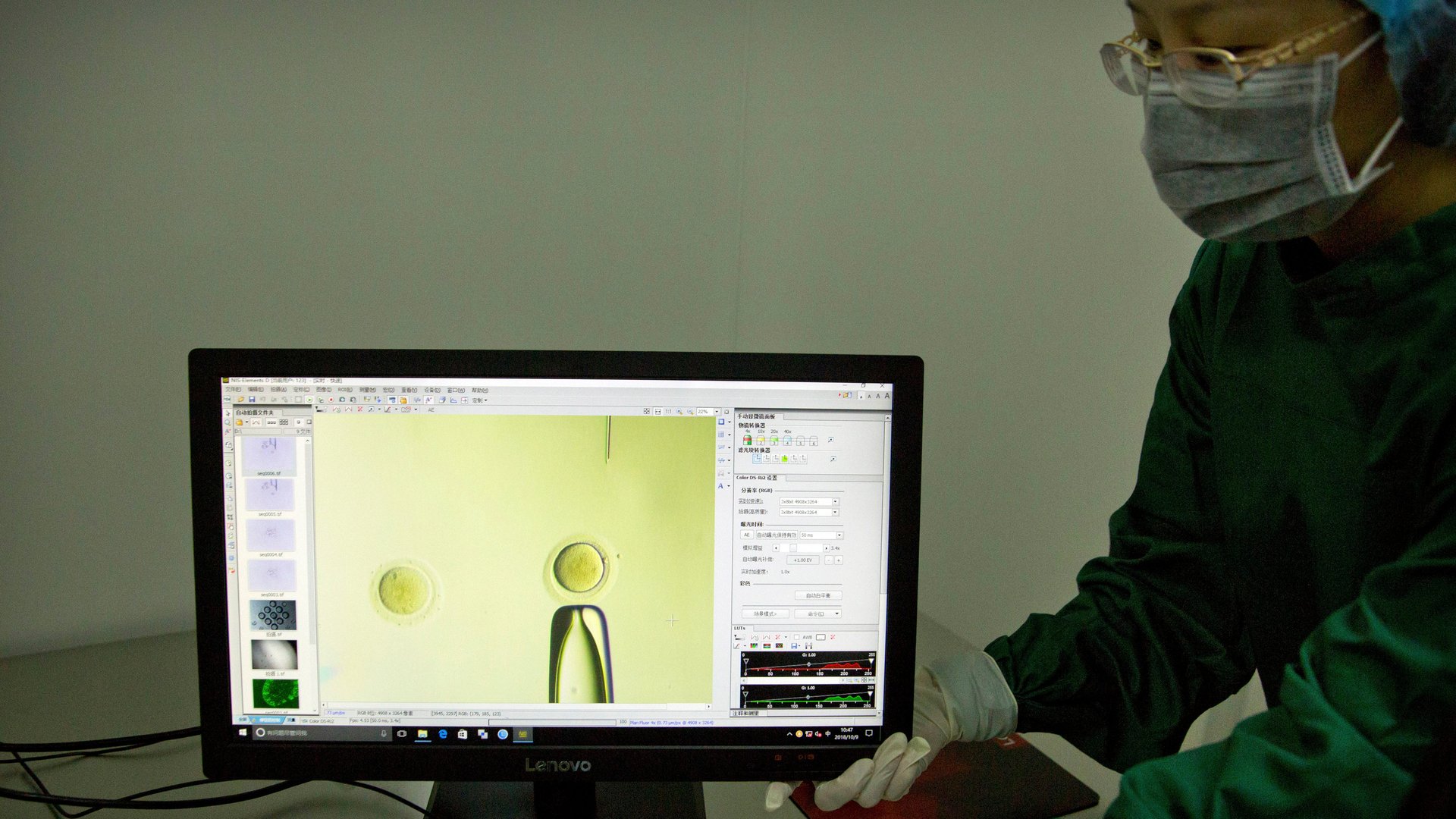China’s gene-edited babies will push bioethics into a dark new era
It was going to happen sooner or later.


It was going to happen sooner or later.
A group of scientists in China claims that they have helped bring to life two genetically-edited babies. The goal was to modify the twin girls’ genes in order to prevent HIV infection and avoid AIDS. The scientists claim they were successful in this effort, according to reports in Associated Press and MIT Tech Review.
The claims haven’t yet been independently verified. But if the researchers have really gone against internationally recognized voluntary guidelines and done what they say, both science and bioethics are now entering unchartered territory.
What’s the news?
The gene-editing project was led by He Jiankui, a researcher at the Southern University of Science and Technology in Shenzhen. The twin girls, named Lulu and Nana, were born to Mark and Grace, who are part of a clinical trial involving seven couples. The men in the trials are all HIV-positive, while the women are not.
The couples underwent in-vitro fertilization (IVF), in which a sperm is injected in an egg in a petri dish and then after a few days a living embryo is planted in the mother’s womb. In this case, however, there was a small tweak. After the sperm was injected into the egg, He’s team injected Crispr-Cas9, a genetic tool that can precisely target and cut a specific gene among 20,000 human genes. In this case, the target was the CCR5 gene. As Quartz has reported previously:
CCR5 is responsible for producing a protein that HIV uses to latch on, enter, and infect a human immune cell. If the CCR5 gene were mutated, the logic goes, the HIV virus would not be able to infect—and thus the mutation would confer resistance to the disease.
In this case, the fathers’ HIV infection was already suppressed using medicine, which would have ensured that the offspring doesn’t carry the disease. The clinical trial’s appeal was to show that it might be possible for the children to never be infected by the disease over the course of their lives. The consent forms signed by the participants called the project an “AIDS vaccine development” program, according to the Associated Press.
The trial runs through till March 2019, according to trial documents on He lab’s website. So far, there has only been one successful pregnancy.

What are the claims?
Until quite recently, scientists trying to modify the CCR5 gene in human embryos ended up with poor results. A 2016 study, conducted by a separate group of Chinese researchers, were able to genetically modify only four out of 26 embryos. Even among those, not all copies of CCR5 gene were modified. Worse still, many embryos suffered unintended mutations. None of the embryos were brought to term.
He doesn’t say how many embryos have been tested in their clinical trial so far. What he does say in videos uploaded to YouTube is that the two genetically modified embryos that were brought to term—namely Lulu and Nana—proceeded as planned. This goes against the 2015 guidelines from the International Summit on Human Gene Editing, which concluded that “if, in the process of research, early human embryos … undergo gene editing, the modified cells should not be used to establish a pregnancy.”
And He’s claim might not be the full story, because the results haven’t been verified by other scientists. Data on the clinical trial’s website show one of the twin girls’ fetuses before they were born has a mix of cells that are edited differently, meaning that some cells have the ability to resist HIV while others don’t.
In other videos published on He’s YouTube channel, he says that Lulu and Nana are not designer babies. He is using the powerful Crispr gene-editing tool only to “heal” families. “If we can help families protect their children, it’s inhuman for us not to,” He says. “We believe ethics is on our side.”
He has drafted his own ethical principles for using the technology, which he invited people to debate and comment on:
- Mercy for families in need
- Only for serious diseases, never vanity
- Respect a child’s autonomy
- Genes do not define you
- Everyone deserves freedom from genetic disease
A report from the South China Morning Post has raised serious concerns about the veracity of these claims or the procedures followed to receive approval for the experiments. The newspaper said most people it contacted were unaware the experiments were happening, including Chinese officials at the National Health Commission, He’s own university’s staff, some members of ethics committee cited in the documents, and even staff at the hospital where the twins are thought to be born.

What are other scientists’ reactions?
The news of He’s experiment has been met with widespread criticism. Issued in 2015, the most recent guidance on Crispr’s use in humans by the world’s leading scientists cautiously approves the use of gene-editing tools in human embryos, but only under strict research guidelines and without bringing the embryo to term. By letting Lulu and Nana be born, He has ignored those instructions.
“In this ever more competitive global pursuit of applications for gene editing, we hope to be a stand-out,” He and his team wrote in an ethics statement they submitted last year, according to MIT Tech Review.
A group of 100 scientists in China and across the world condemned the research, writing that He’s experiment has opened Pandora’s box. “The bioethics approval for this so-called ‘study’ was insufficient. We can only use the word ‘crazy’ to describe the experiment conducted directly on human beings,” the statement said. It continued: “We as biomedical researchers strongly oppose and condemn any attempts on editing genes on human embryos without scrutiny on ethics and safety!”
Fyodor Urnov of the Altius Institute for Biomedical Sciences, joined the chorus of criticism, expressing to MIT Tech Review “regret and concern over the fact that gene editing—a powerful and useful technique—was put to use in a setting where it was unnecessary.”
“In cases where the potential risks are substantially higher than the potential benefits, which I think is the case here, that is not ethical,” Kiran Musunuru of the University of Pennsylvania told the Associated Press.
If true, the study “would be a premature and temerarious intervention for many, many reasons,” tweeted Peter Mills of Nuffield Centre for Bioethics.
Feng Zhang, a geneticist at the Broad Institute and one of the world’s leading Crispr scientists, has gone the furthest calling for a global moratorium on implanting edited embryos in wombs. “Not only do I see this as risky, but I am also deeply concerned about the lack of transparency surrounding this trial,” he said in a statement.
Some were more moderate in their assessment. George Church, a geneticist at Harvard Medical School, told the Associated Press that He’s decision to use gene-editing to prevent HIV was justified because of the large global burden of the disease. But he wasn’t happy with the way the study was conducted, especially when the embryo with only some of the cells genetically edited was also brought to term.
What next?
In one way, what He’s lab did should not be surprising. Crispr technology is used so widely that it was inevitable someone would apply it to genetically-modify embryos and bring them to term. The upside is that we know such an experiment has happened, and He appears to be open to comments and dialogue. The downside is that it’s not clear whether such dialogues will result in a stricter working environment.
Gene-editing technologies have the potential to be hugely beneficial to humanity. But there are large risks too, because these modified genes would be passed onto other humans for generations. There are currently no global regulations that govern the use of IVF techniques or genetic modification of human embryos. Though some countries have national regulations, what exists globally is a set of guidelines that researchers can agree to on a voluntary basis. He clearly flouted those guidelines in his experiments in favor of his own principles. That’s unlikely to go over well with the scientific community or society at large.
The news of Lulu and Nana comes only a day before the world’s preeminent scientists are meeting in Hong Kong, a short train ride from Shenzhen, at the second International Summit on Human Genome Editing. (As Stat explains, the change from “gene editing” to “genome editing” reflects how modern tools can edit not just one gene but many at one time.)
“We’re hoping that these series of meetings will provide guidance, provide a form of interaction between the scientific community and the general public,” said Nobel laureate David Baltimore in a pre-recorded video about the meeting. “We have to come together to agree on what we want to do, how we want to do it, and what we consider to be right and wrong on a voluntary basis. Our hope is that the advances of science will be available to the whole world.”
He’s study will inevitably be a major point of discussion. If humans have indeed opened Pandora’s Box, it’s going to be very hard to shut.
This article was updated to include the questions raised by the South China Morning Post story.